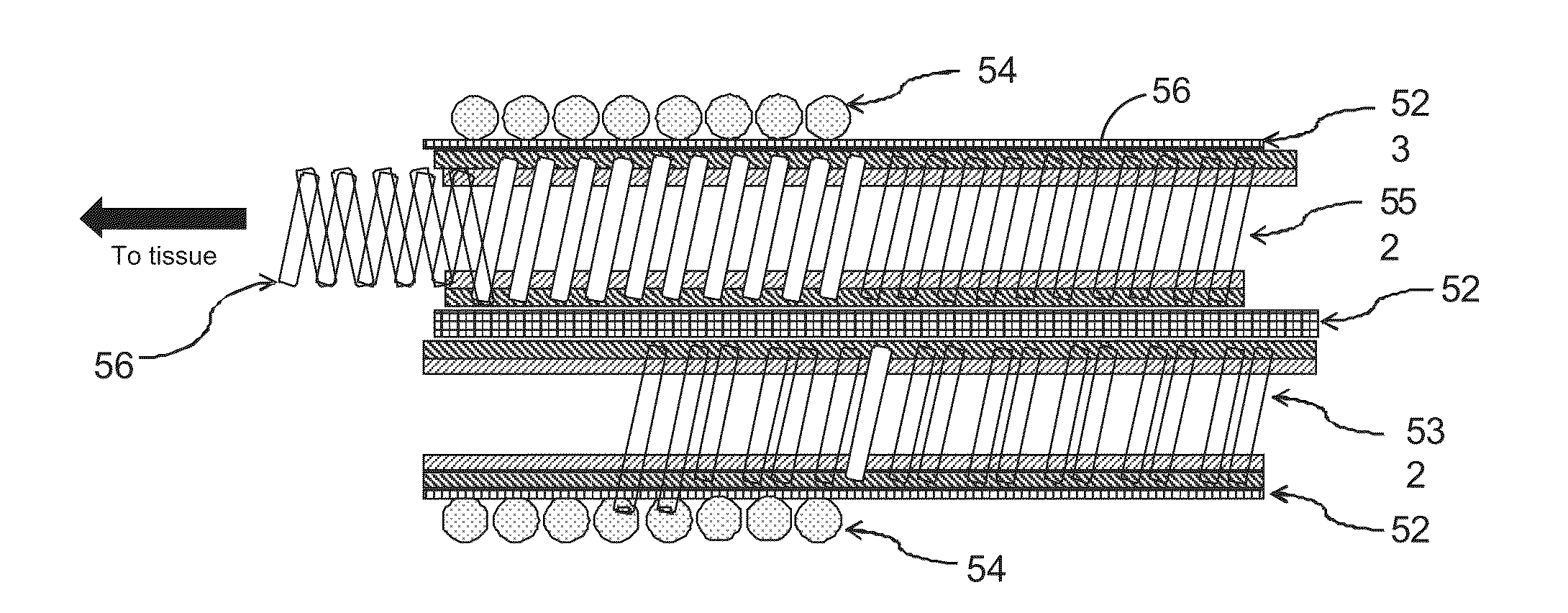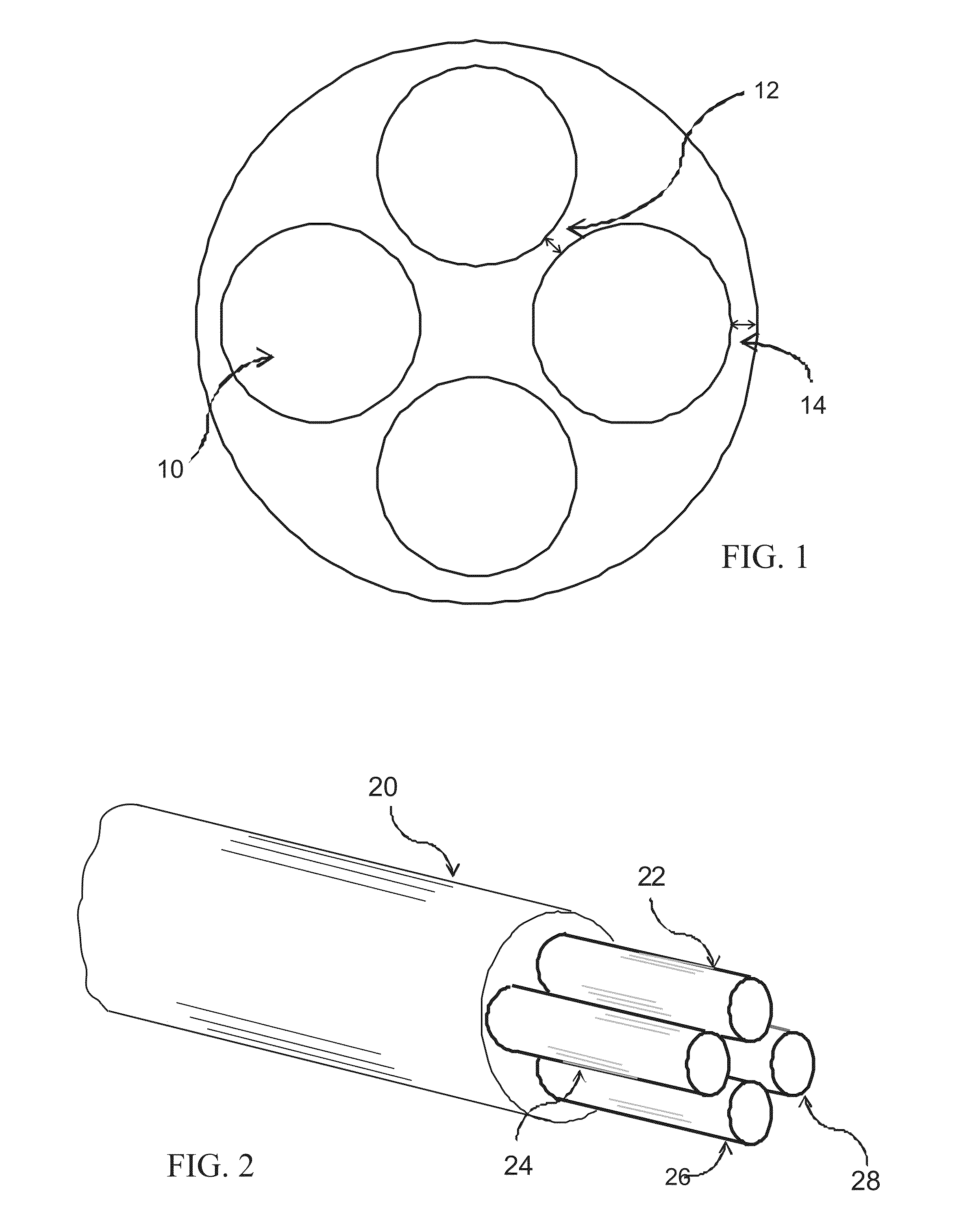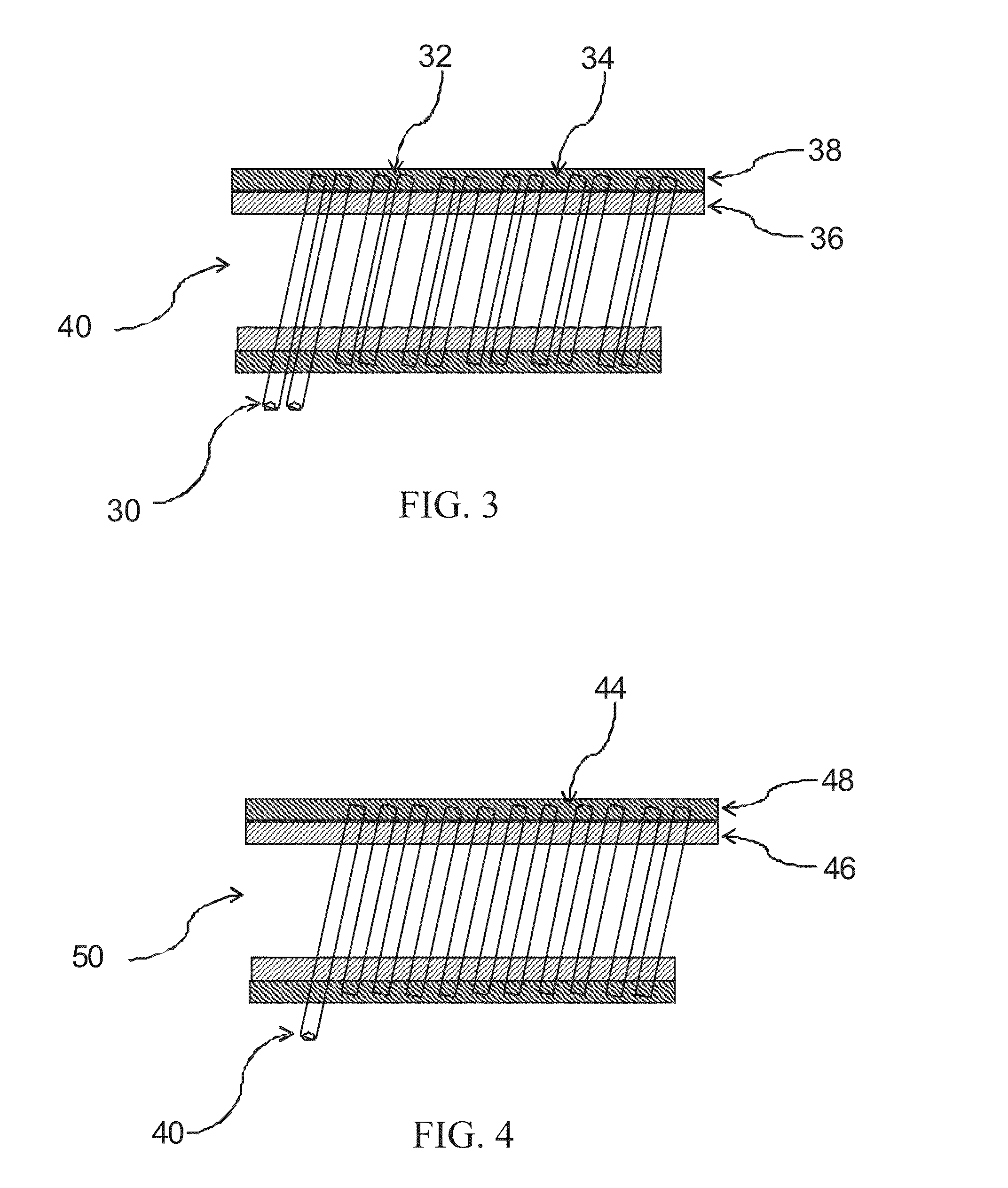MRI compatible implantable electronic medical lead
- Summary
- Abstract
- Description
- Claims
- Application Information
AI Technical Summary
Benefits of technology
Problems solved by technology
Method used
Image
Examples
Embodiment Construction
[0039]The present technique for magnetic resonance compatibility of an implanted electronic medical lead considers several effects of direct current (DC) magnetic fields, gradient magnetic fields, and RF fields on patient safety, the implanted lead and the MRI scanner. As a consequence, the medical lead described herein incorporates one or more mechanisms that offer high impedance to currents induced by the MRI electromagnetic fields or prevent such currents from forming in the first place. In addition to using non-ferromagnetic components which have a magnetic susceptibility close to that of the surrounding tissue, these mechanisms comprise a multi-lumen body structure and multiple conductive helical coils.
Multi-Lumen Body Structure
[0040]The multi-lumen body structure comprises a length of tubular dielectric material with a plurality of lumens extending over its entire length. A cross section of this structure is shown in FIG. 1. The size of the lumens 10, the distance 12 between a...
PUM
 Login to View More
Login to View More Abstract
Description
Claims
Application Information
 Login to View More
Login to View More - R&D
- Intellectual Property
- Life Sciences
- Materials
- Tech Scout
- Unparalleled Data Quality
- Higher Quality Content
- 60% Fewer Hallucinations
Browse by: Latest US Patents, China's latest patents, Technical Efficacy Thesaurus, Application Domain, Technology Topic, Popular Technical Reports.
© 2025 PatSnap. All rights reserved.Legal|Privacy policy|Modern Slavery Act Transparency Statement|Sitemap|About US| Contact US: help@patsnap.com



